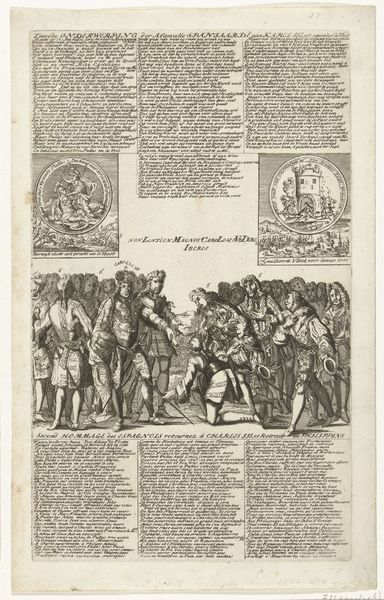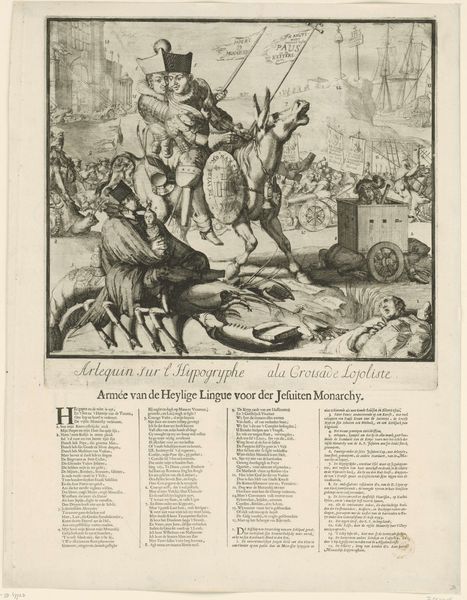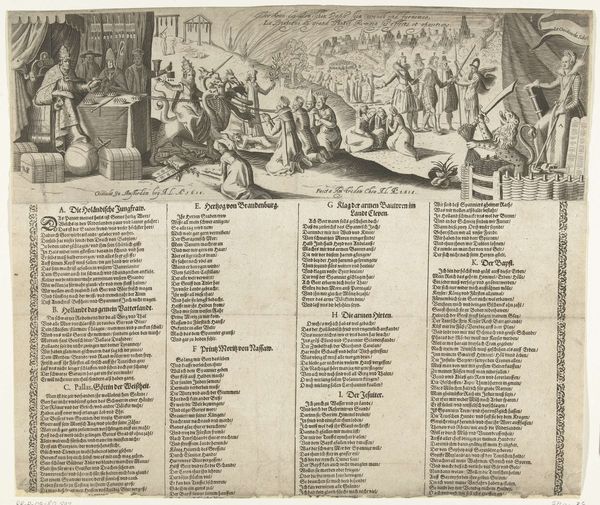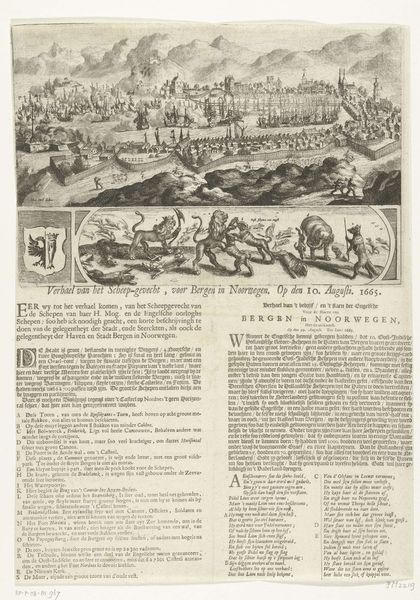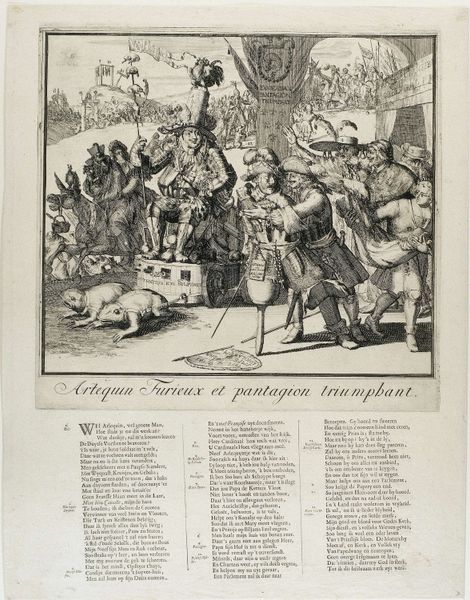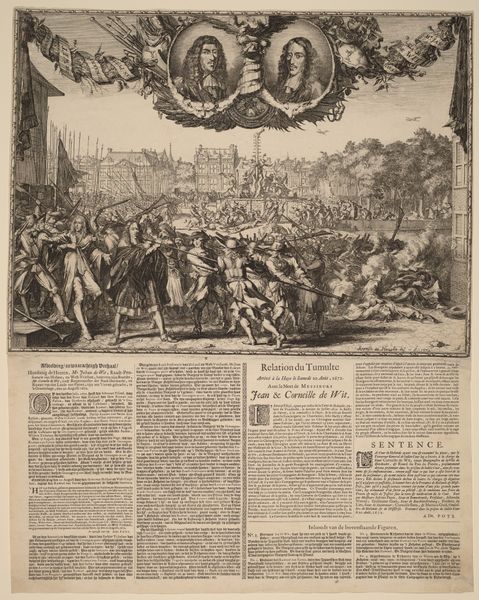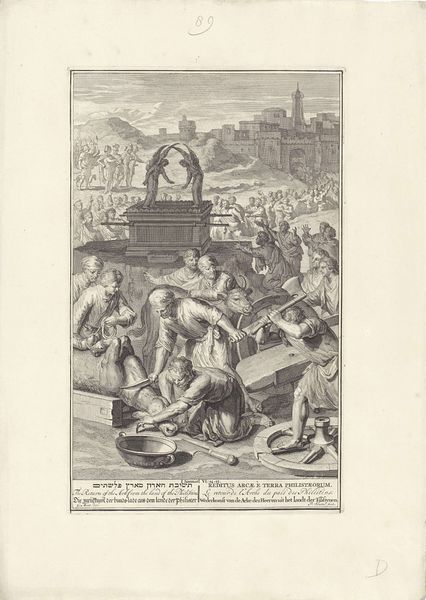
Willem III op de Hollandse Leeuw verjaagt pater Peters op de draak van Babylon, 1689 1689
0:00
0:00
print, metal, engraving
#
narrative-art
#
baroque
#
dutch-golden-age
# print
#
metal
#
old engraving style
#
history-painting
#
engraving
Dimensions: height 374 mm, width 302 mm
Copyright: Rijks Museum: Open Domain
This 1689 print, made by an anonymous artist, depicts William III on the Dutch Lion, banishing Father Peters on the Babylonian dragon. Here, the lion is more than just a beast; it's a symbol of Dutch courage and defiance, echoing similar motifs of national strength found in heraldry across Europe. This lion doesn't just stand; it charges, a gesture mirroring the dynamism seen in classical sculptures of triumphant emperors. The dragon, representing Babylon and its associations with decadence, appears across centuries, from medieval tapestries to Renaissance paintings. The emotional and psychological impact of these symbols is profound. The lion evokes feelings of pride and security, while the dragon instills fear and disgust. It's fascinating how these symbols resurface, evolve, and take on new meanings in different historical contexts. They become part of our collective memory, engaging viewers on a subconscious level and reminding us of the timeless struggles between order and chaos.
Comments
No comments
Be the first to comment and join the conversation on the ultimate creative platform.

